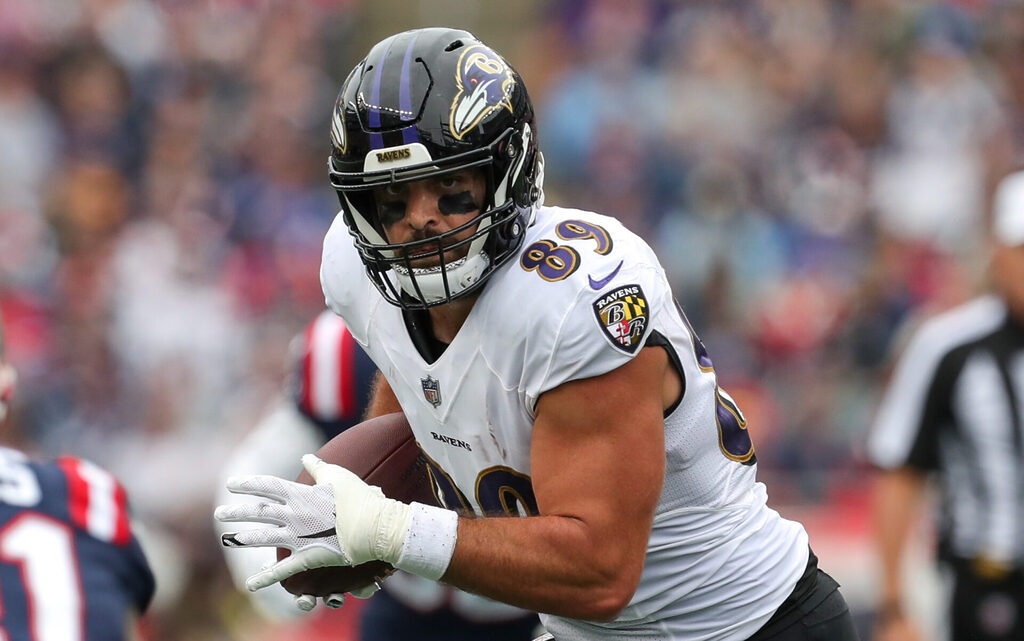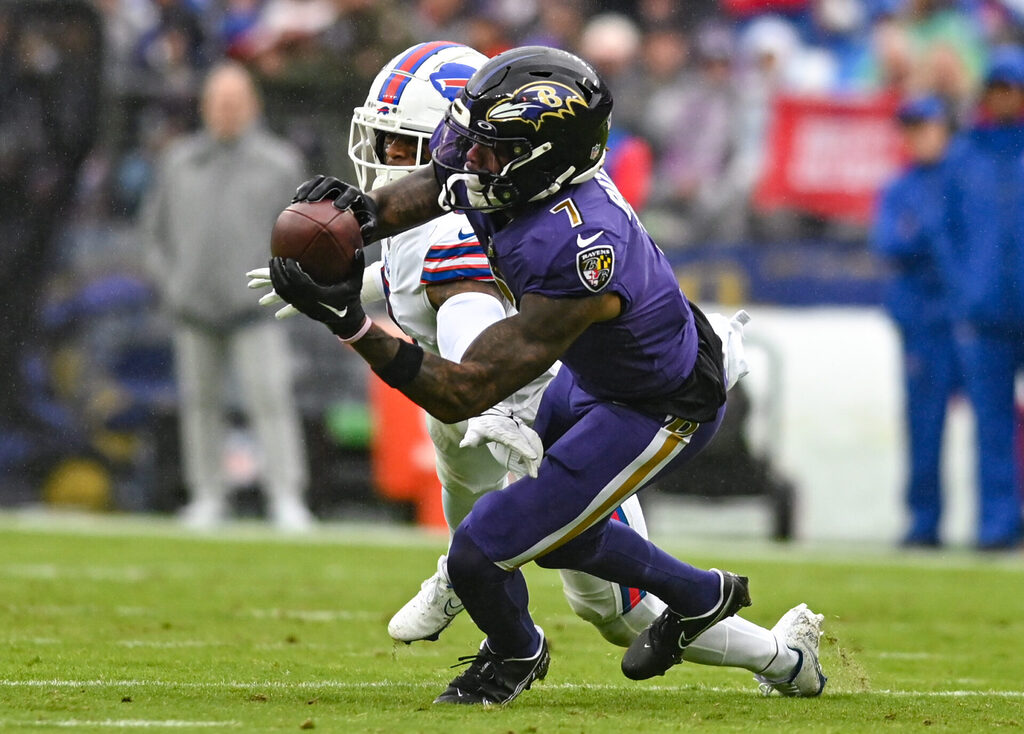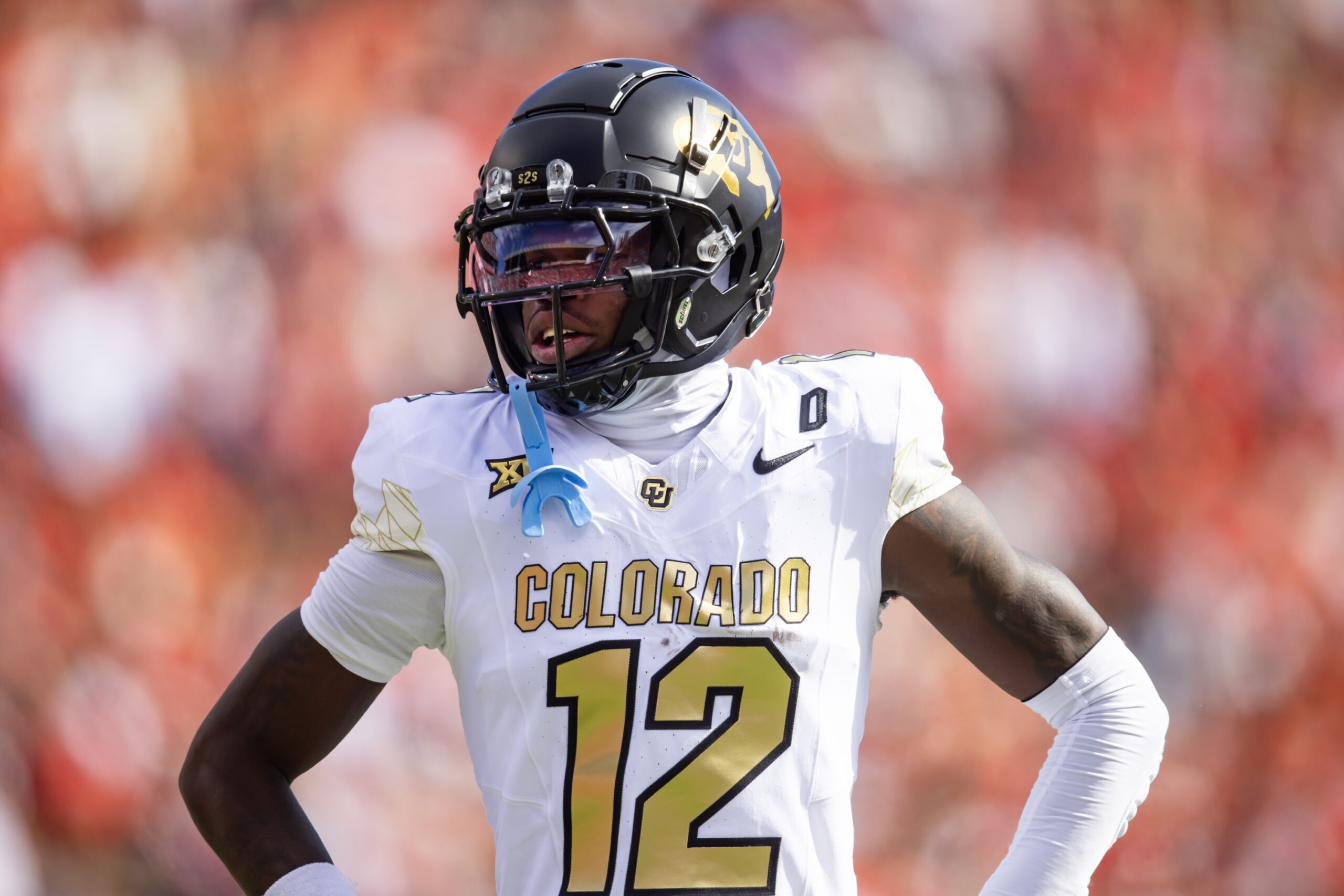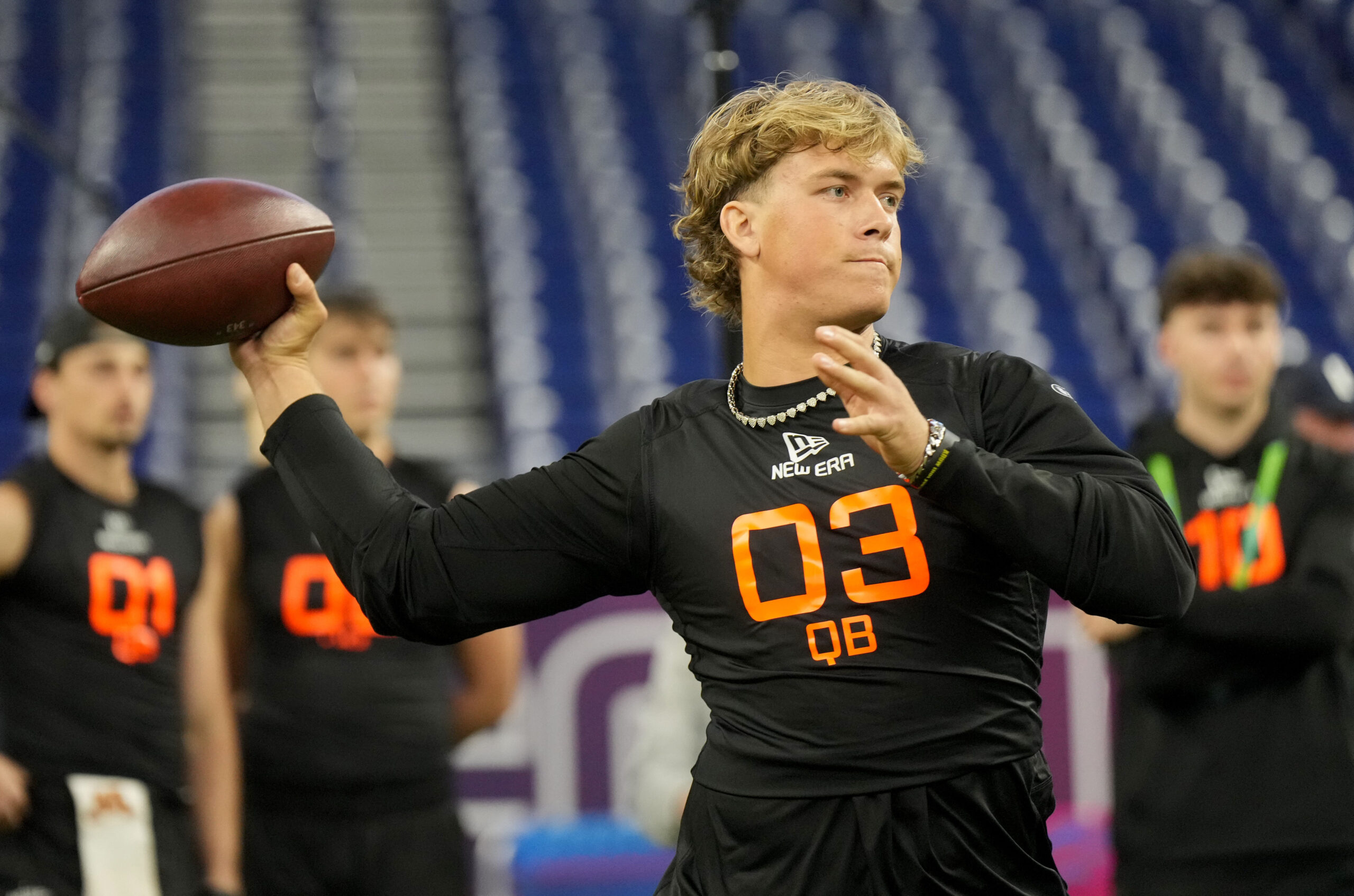Analysis
5/29/23
7 min read
Best Ball: Expect More Targets for Baltimore Ravens' Pass Catchers

In the introductory article for this series, we laid out the framework for identifying ambiguity in best ball. If you’re unsure what we refer to, read that piece before continuing with this article.
Now let's focus on a situation that should look vastly different this season due to many changes among its primary skill position players, offensive coordinator and expected team identity – the Baltimore Ravens pass-catching corps.
Other profiles: Treylon Burks | DeAndre Hopkins | Jameson Williams | Dolphins RBs
All data discussed is from Sports Info Solutions.
Ravens' Pass Catchers Best Ball Outlook
Coaching, Personnel Changes
The antiquated and in-your-face offensive approach held during former offensive coordinator Greg Roman’s tenure is no more. The Ravens hired University of Georgia offensive coordinator Todd Monken.
Baltimore signed wide receiver Odell Beckham Jr. to a hefty free agent contract and drafted rookie wide receiver Zay Flowers at No. 22 overall in the 2023 NFL Draft. Fellow wide receiver Rashod Bateman reportedly is healthy after missing 12 games in 2022, including the Wild Card Round loss to the Bengals. Bateman and the recently re-signed Lamar Jackson were present for voluntary OTAs held last week.
Finally, Baltimore took a significant hit on defense through the offseason departures of Calais Campbell, Marcus Peters, Kyle Fuller and Jason Pierre-Paul, which theoretically would force more neutral and competitive game environments moving forward.
[bc_video video_id="6328091896112" account_id="6312875271001" player_id="default" embed="in-page" padding_top="56%" autoplay="" min_width="0px" playsinline="playsinline" picture_in_picture="" language_detection="" application_id="" max_width="680px" mute="muted" width="100%" height="100%" aspect_ratio="16:9" sizing="responsive" ]
Team Volume, Efficiency
Roman’s term with the storied franchise began in 2019 and ended after the 2022 season. During his tenure, the Ravens held the league’s second-lowest pass rate at 53.4 percent (0.1 percent higher than 32nd-ranked Tennessee Titans) and the league’s fourth-highest red zone rush rate at 51.5 percent.
Monken previously was the offensive coordinator for the Tampa Bay Buccaneers from 2016-18 and the Cleveland Browns during the 2019 season. Monken's Tampa Bay offenses ranked second in passing yards per game at 279.5, third in pass rate at 64.8 percent, fourth in red zone pass rate at 37.9 percent and seventh in yards per play at 5.71.
The league average for plays per game was 63.4 during the previous five seasons (fewer than the 65.7 plays per game Monken's Buccaneers offenses ran), which yields a baseline projection of 1,078 plays over a 17-game season.
High-side projections for total Ravens pass attempts, considering the baseline team volume established above and a 64.8 percent pass rate, yield 698 pass attempts for 2023. A league-average 60.5 percent pass rate (over the previous five seasons) yields 652 pass attempts. Those provide a viable range of outcomes for the expected pass volume from the Ravens for the 2023 season.
As for personnel groupings, expect a significant increase to the 11-personnel utilization rate from the Ravens under Monken compared to the bottom three 11-personnel rates they ran during the previous three seasons under Roman. That offensive identity shift likely will come at the expense of the team’s elevated 12- and 21-personnel rates in the past three seasons. It will mean fewer overall snaps available for fullback Patrick Ricard and tight end Isaiah Likely.
The wide receiver corps of Bateman, Demarcus Robinson, Devin Duvernay and James Proche combined for just two instances of a snap rate of more than 80 percent in 18 games during the 2022 season.
Individual Projections
Zay Flowers is omitted from the below table because he is a rookie.
Important Metrics (2022, 2021; Bateman, Beckham Jr.)
- Targets per Route Run (TPRR): 25.5%, 20.2%; 21.4%, injured
- Route Participation: 64.3%, 74.9%; 81.4%, injured
- Target Rate: 17.9%, 15.8%; 17.7%, injured
- Average Depth of Target (aDOT): 13.4, 8.0; 11.5, injured
- Red Zone Target Share: 3.4%, 10.0%; 19.0%, injured
Tight end Mark Andrews has played from 34.4 to 41.0 percent of his snaps from the slot during his five-year NFL career in Baltimore. That range of values is likely to decrease, considering the changing dynamics of the Ravens offense. His team target market share has increased in each of his NFL seasons, culminating in a robust 29 percent target rate in 2022. Assuming a more neutral 24 percent target market share through a decreased slot snap rate yields a baseline expectation of 156 targets for Andrews in 2023.
An important realization to this puzzle is Beckham hasn’t commanded a targets per route run value over 24.7 percent since the 2019 season. He missed 2022 altogether because of his second ACL tear. While we can’t necessarily expect Bateman and Beckham to suddenly be utilized as 95 percent plus snap rate wide receivers considering the presence of Likely and Ricard, a safe and conservative estimate of 80 to 85 percent fits the bill.
Flowers likely will be the Ravens' primary slot wide receiver and the pass-catcher most likely to be affected by the presence of Likely and Ricard. So expect Flowers to see his snap rate most influenced by the utilization of heavy sets.
>>READ: Ravens' Draft Grades – Flowers Could Ignite Offense
That gives Batemans and Beckham a range of 31-34 routes per game based on the assumptions we’ve made to this point. On a viable 25.5 percent targets per route run rate, as was the case for Bateman in an injury-shortened 2022 season, that yields eight to nine targets per game. Expect Bateman to land in the 136 to 153 target range during the season. Expect Beckham's range of outcomes to be most affected by health. Assuming 13 games played leaves him in the 103 to 116 target range.
Flowers checks in at a range of outcomes similar to Beckham, in the 102 to 114 target range, leaving a baseline projection of 133 targets to be split amongst the backfield and secondary contributors.
Variance-Induced Upside, Downside
The above projections were based on a league-average pass rate (over the previous five seasons) and a median projection of historical plays per game in Monken offenses and for the Ravens. Historically, Monken's offenses will push the limits of pass rate. On the other hand, head coach John Harbaugh has notoriously been rather conservative as a game manager, contributing to the downside of these projections.
The most glaring conclusion from this study regarding expected fantasy production is the breakdown of expected targets for the wide receivers. Bateman handily separates himself from the pack as the expected alpha in this offense. Consider Bateman's primary competition for snaps and targets: a rookie wide receiver, a tight end who should see a decrease in slot snap rate considering the offseason's personnel and coaching decisions, and a former alpha wide receiver coming off his second ACL tear, which also has not earned targets recently at a rate comparable to earlier in his career.
>>READ: Ravens' Schedule - Dates, Times, Primetime Games
That Bateman currently is being drafted behind Flowers is the fantasy equivalent of a travesty, likely worsened by the psychological aspects surrounding rookies early in the draft cycle.
That leads me to want to take an exploitative overweight approach on Bateman in this early portion of the draft cycle, an underweight approach on Bateman, and take variance-laden chances on Beckham should he remain healthy at a depressed price point. Andrews still should lead this team in targets but is unlikely to approach the same efficiency or volume that propelled him to the overall TE1 fantasy finish in the 2021 season. I stand behind an underweight approach considering a Round 3 ADP.
Follow The 33rd Team Podcast Network on Spotify and Apple Podcasts.








